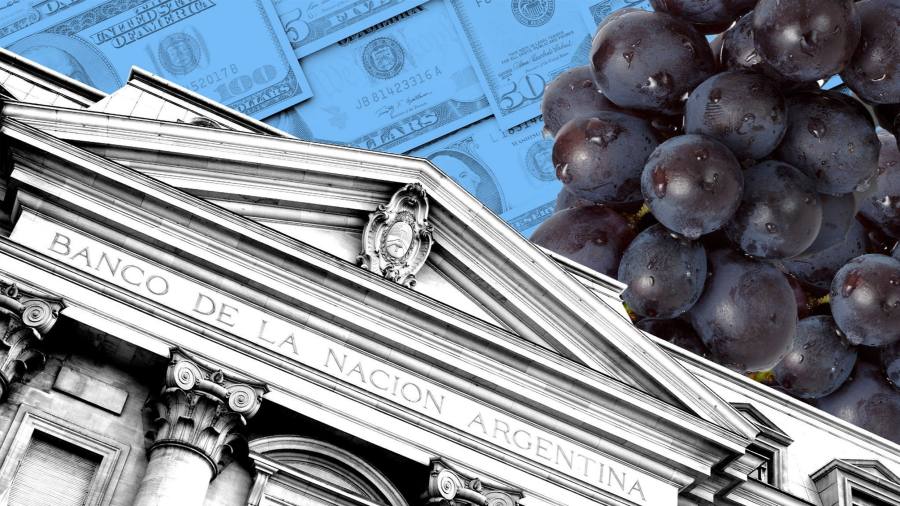Argentine wine producers will be granted a preferential “Malbec dollar” exchange rate as the government seeks to boost exports and replenish its dwindling central bank reserves.
Ministers said they would introduce the rate from April to help vineyards struggling with an annual inflation rate approaching 100 per cent, along with extreme weather conditions affecting the harvest.
Enrique Vaquie, minister for energy and economy in Mendoza province, told the Financial Times that trying to export Argentine wine had been like “rowing through a river of dulce de leche”, referring to the nation’s signature sticky caramel sauce.
The exchange rate plan follows a “soy dollar” policy introduced in September to boost exports of the crop, allowing farmers to sell at a premium rate of 200 pesos to the dollar compared with an official rate of about 150 pesos at the time.
Finance minister Sergio Massa said this month that the more generous exchange rate for wine — the exact level of which has not yet been unveiled — aimed “to help recover export competitiveness and help consolidate Argentina’s reserves”.
The rate, swiftly dubbed the “Malbec dollar”, would be followed by further preferential rates for local products, Massa said. Other regional products include lemons and cotton.
Extreme climate conditions have damaged crops, reducing exports and hence the inward flow of foreign currency as farmers struggled with a late frost and severe drought over the past year.
Argentina is among the world’s 10 largest wine exporters in dollar terms, but overall production fell by a fifth in 2022 from a year earlier, while exports of bulk wines dropped 20 per cent by value. The 2023 harvest, which ends in late April, was likely to be one of the worst in a decade, experts said.
High costs, export taxes and the exchange rate — which in Argentina is artificially pegged to the dollar — had cut into profitability and created “urgent” problems for the industry, said Patricia Ortiz, president of wine growers’ association Bodegas de Argentina.
“For higher-end wines there is still a [profit] margin,” said Ortiz, who owns seven Mendoza vineyards at the foot of the Andes, producing different grape varieties including Malbec. “Where we’re losing out to other markets, like Chile and Spain, is with our bulk wines.”
The value to growers of each bottle sent overseas had dropped by as much as half since the end of 2021, primarily because of inflation, Ortiz estimated.
The latest currency scheme follows at least 10 different preferential exchange rates applied to various sectors during President Alberto Fernández’s first three years in office. Critics say these are a means of avoiding devaluing the currency.
Buenos Aires-based economist Fernando Marengo said the ruling Peronist government “does not want to take on the cost of devaluing in an election year” because it would lead to higher inflation, rising poverty and risk social unrest. General elections are due to take place in October.
Argentina was largely cut off from international markets following its ninth debt default in 2020. Net foreign currency reserves stood at about $4.4bn in February, said private analysts. Without a fresh influx of dollars, reserves this year could fall below targets set by the IMF in a $44bn debt deal reached last year.
Ortiz said the government would struggle to replicate the boost given to the soy harvest by its preferential exchange rate, given longer production times for wine.
Vaquie said the rate would not be enough to help producers, who also faced yeast and cork shortages resulting from import restrictions.
Ortiz added that one positive outcome from exceptionally high summer temperatures in Mendoza was a rise in wine quality, with growers diversifying their crop to make Chardonnays and Cabernets.
“The wine isn’t the problem, the problem is how we can export our premium products,” she said. “If they help us, we will bring in more dollars.”
Read the full article here



